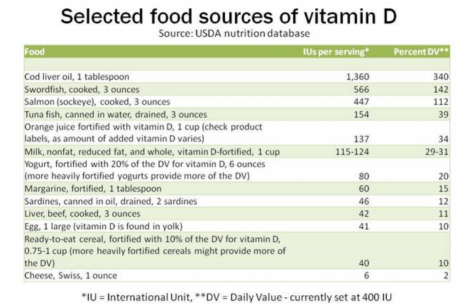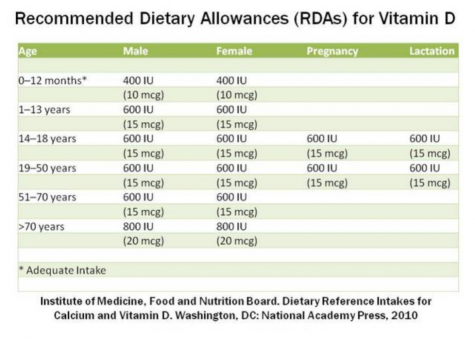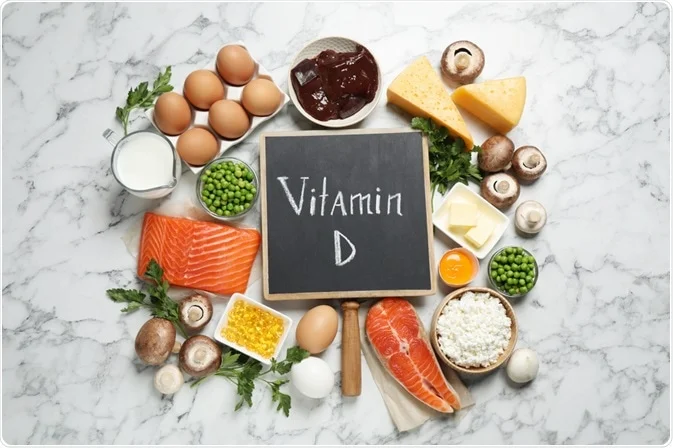Vitamin D Deficiency: The Silent Ongoing Pandemic
September 21, 2021
The COVID-19 pandemic had many degradations in the quality of human life: we were collectively deprived of proper nutrition, human connection, conventional education, employment opportunities, travel, sufficient supplies, and satisfactory healthcare to barely start. Being inside our homes, eating canned, ordered, and packaged foods to suffice in the absence of a vaccine immunization to protect our community, family, friends, and coworkers for almost two years have now led to a new, ongoing, silent pandemic: low Vitamin D levels.
To a layman, vitamin D deficiency is not that big of a deal compared to the horrifying twists of unfortunate events that have been inflicted upon our lives in the past two years. However, researchers and physicians are not wrongly concerned when they think this is a big problem that will lead to more significant issues in the future. In all its glory, Vitamin D is a potent molecule essential for bone health, boosting the immune system, lowering body weight in overweight individuals, reducing cholesterol, inhibiting cancerous cells, fortifying neurons, and uplifting mood- and that is just skimming the surface.
What is Vitamin D?
As the name explicitly states, Vitamin D is, along with its popular nickname “sunshine vitamin,” often suggests that we get it from the rays of our closest star: the Sun. While it is true that when the cholesterol in our skin is exposed to the UV rays of the sunlight, much like plants photosynthesize to make sugar, our skin makes vitamin D with the help of our kidneys. Interestingly, it is not just that simple, since getting exposed to UV rays from the sun/tanning beds come with their own set of risks which are often more dangerous than a vitamin D deficiency. Moreover, the amount of vitamin D an individual gets from the Sun can vary. The AAD (American Academy of Dermatology) does not recommend getting vitamin D from sunshine/UV rays at all!
In the human body, Vitamin D also acts as a steroidal hormone in our body to maintain overall good health, protecting our musculoskeletal functions, better mental fitness, reducing the chances of heart disease, multiple sclerosis, and diabetes; alleviates symptoms of anxiety and depression, and boost healthy weight maintenance. This also helps the proper absorption of calcium and phosphorus in the body. There are 3 types of Vitamin D: Vitamin D1, D2, D3, respectively. While foods have vitamin D, it’s few and far between in an average person’s regular diet. We get some vitamin D2 from plant sources. In contrast, vitamin D3 is found from animal sources, while many foods nowadays are making an effort of fortifying with vitamin D. It is found that vitamin D3 raises levels of vitamin D in blood twice as much as vitamin 2 when taken the same amount. Since this vitamin is fat-soluble, the deficiency is not seen abruptly but noticed over some time when one feels “not the best ” gradually over time.
Who is at risk of Vitamin D deficiency?
Honestly, anyone who is not getting enough sun exposure can develop a vitamin D
insufficiency/deficiency. However, with that said, people of color with higher melanin content in their skin (nature’s sunscreen!), older people (>65), young women, babies who only feed on breastmilk (the formula is fortified with vitamin D), pregnant and breastfeeding women, and people with a higher BMI are more susceptible to vitamin D deficiency. In the USA, 42% of all people are vitamin D deficient. That number skyrockets to a staggering 82% in black individuals and 69.2% in the Latinx community. About 1 billion people have been tested to be vitamin D deficient. The number is predicted to increase unless people are made aware of its adversaries. Living in an area with a high pollution index, big cities with tall buildings that provide a lot of shadows where you live, low sun exposure (by sunscreen/staying indoors/using Sun protective accessories/living in a cloudy city), and not having vitamin D-rich foods in the diet can also lead to a vitamin D deficiency.
How do I know I am deficient?
The only surefire way to tell if a person is deficient in vitamin D is to take a blood test. If you have suspicions of a vitamin D deficiency and are experiencing common symptoms such as fatigue, a general feeling of unwellness (malaise), muscle cramps, nausea, constipation, confusion, etc., contact your primary healthcare provider and ask about the concerns, and if they may be related to the vitamin D levels. Vitamin D levels are checked by doing blood work called “25-OH vitamin D test and the calcidiol 25-hydroxy cholecalciferol test”. While it sounds intimidating, it is a simple test by which healthcare professionals see the amount of vitamin D present in your blood to get a general idea about how much vitamin D is stored in your body. Your blood test results will show x nmol/L or x ng/mL, and the points below can help you identify the criteria you fall under.
- deficiency: less than 30 nmol/L (12 ng/mL)
- potential deficiency (insufficiency): between 30 nmol/L (12 ng/mL) and 50 nmol/L (20 ng/mL)
- normal levels: between 50 nmol/L (20 ng/mL) and 125 nmol/L (50 ng/mL)
- high levels: higher than 125 nmol/L (50 ng/mL)
While this table is agreed upon internationally, most physicians suggest keeping a vitamin D level of 50ng/mL is ideal for most people.
Then… how can we get our vitamin D if not from the Sun?
Proper dietary changes in the population need to be implemented to gain back correct, desirable, healthy levels of vitamin D. For vitamin D3, fatty fish such as herring, trout, and salmon, sardines, mackerel, halibut, cod liver oil are recommended to be incorporated into the diet. Fortified foods such as eggs, cereal, orange juice, yogurt, and milk are also good sources if consumed daily. If you have dietary restrictions or if these foods are not available, vitamin D supplements are available over the counter to meet your daily requirements.

How much vitamin D do I need every day?
Here is a table to give you an idea of how much vitamin D you need daily. As a rule of thumb, always contact and be advised before starting any supplements or medication with your primary healthcare professional to avoid self-medication. According to the Institute of Medicine experts, these are the recommended dietary allowances for Vitamin D.

There is an ongoing debate if this level is enough, as most physicians such as Dr. Holick (MD, Ph.D., Vitamin D expert, professor of medicine, physiology, and biophysics at Boston University Medical center) from Boston University claims children and adults need a 1000IU if they are not getting enough safe sun exposure. People will find a higher body fat content will also need more vitamin D than lean people. Therefore this varies, and everyone’s healthcare physicians can dictate how much Vitamin D one needs.
Vitamin D deficiency/insufficiency and COVID-19
There is sufficient evidence that a low vitamin D deficiency will cause a harsher infectious trigger by the COVID-19 in humans. There are currently 19 studies that back up this observation that people under 30ng/mL of vitamin D were more susceptible to severe upper respiratory infection by coronavirus than those above 30ng/mL. Low vitamin D levels have been found to have a higher inflammatory effect. Often, after being infected by the novel coronavirus, the body of an individual not armed with proper vitamin D levels can be severe.
Bottom line:
Vitamin D is a vital necessity in our body. It acts both as a hormone and a vitamin. It has been shown to have numerous benefits for the mind and body alike. The ongoing “silent pandemic” needs people to be cautious of the effects of low vitamin D levels in their blood and body and educate themselves of the various health benefits of having adequate vitamin D in their system. That being said, discussing and getting proper professional healthcare advice from your primary care provider is crucial before starting any supplements and medication. However, safe levels of vitamin D can be achieved from certain foods and safe sun exposure.













